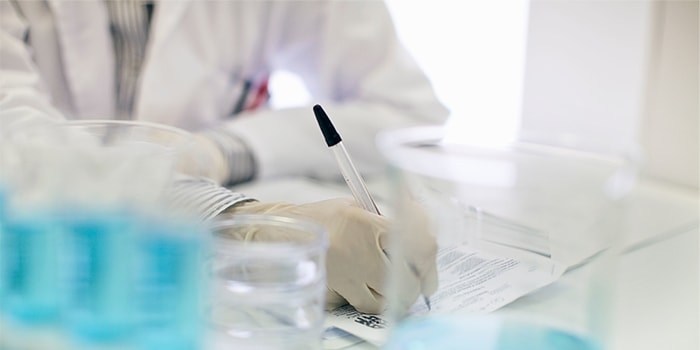How biopharmaceutical collaborations are fueling biomedical innovation has been saved
Analysis
How biopharmaceutical collaborations are fueling biomedical innovation
Life sciences partnering for progress
In today's rapidly evolving era of scientific progress and personalized medicine, collaboration across the biopharmaceutical R&D ecosystem has become essential in driving innovation in patient treatment and care.
Overview of the report
Biopharmaceutical companies increasingly are partnering with health care and other stakeholders to form biopharmaceutical collaborations that address scientific and technological challenges, create greater efficiencies in R&D, and accelerate the development and delivery of new patient treatments.
Deloitte Consulting LLP was contracted by the Pharmaceutical Research and Manufacturers of America (PhRMA) to analyze the various types and number of biopharmaceutical partnerships created over the past several decades, which resulted in a comprehensive database of partnerships formed between 1980 and 2014. From this effort, we found that R&D-focused partnerships—most notably, non-asset based models—have grown substantially over the last decade.
Biopharmaceutical partnership models and trends
There is a major shift underway as life sciences stakeholders move from traditional asset-based partnerships, typically involving two parties which are focused on advancing a particular asset (i.e., investigational medicine) to collaborative, non-asset based R&D partnerships. These new biopharmaceutical collaborations may include three or more parties, often a mix of ecosystem stakeholders including life sciences companies, academia, non-profits, and government entities.
Non-asset-based partnerships, such as consortia, often aim to expand knowledge and understanding within and across one or more indications, therapeutic areas, or even operational capabilities. Importantly, these partnerships feature shared control and decision-making, thus spreading both the potential risks and rewards.
Biopharmaceutical R&D ecosystem partnering trend
Key findings
Successful non-asset-based partnerships and consortia align incentives and share both risk and reward across multiple stakeholders to pre-competitively pursue scientific discovery.
- Approximately 9,000 new biopharma research and development (R&D) partnerships were formed between 2005 and 2014 at an annual growth rate of four percent during that 10-year period.
- The 9,000 new biopharmaceutical R&D partnerships formed between 2005 and 2014 are more than double the number formed (approximately 4,000) in the preceding decade (1995-2004).
- The consortium model alone saw a nine-fold increase between 2005 and 2014 versus the prior decade, with 334 new consortia formed, versus just 34 from 1995 to 2004.
- More partnerships are forming in earlier stages of the R&D process (i.e., prior to a potential new therapy entering clinical trials), with the average number of new early-stage (discovery, basic research, and pre-clinical) partnerships more than doubling between 2005 (256) and 2014 (578).
"It would be hard to imagine five years ago that the industry would be sharing resources and information about drug targets as openly as it does now. Many companies are essentially working on the same targets; we all share the need to achieve a better understanding of what underlies them."
— David Wholley, MPhil, Director, Research Partnerships at Foundation for the National Institutes of Health
Non-asset based biopharmaceutical R&D partnership models
Deloitte analyzed the types of biopharma R&D partnerships created over the last several decades, building a comprehensive database of collaborations. The database identified non-asset based partnerships, primarily in the form of joint ventures (JVs) and consortia. Click the tabs below to learn more about non-asset based biopharmaceutical collaborations:

Joint venture (JV)
Two or more entities agree to collaborate on R&D-related activities to achieve a specific objective and share accompanying risks and rewards.

Consortia
Three or more competing or non-competing parties pool resources and work together to achieve a common goal, such as accelerating scientific discovery in a particular disease area or technology.

Other
Parties provide financial resources and/or marketing, educational, and promotional programs (e.g., company support of broader disease awareness efforts).
Biopharmaceutical R&D partnerships: What lies ahead?
There is a growing recognition of the value and importance of collaboration across the biopharmaceutical R&D ecosystem. In the coming years, we expect to see continued expansion in disease area-focused consortia, including growing emphasis on more “open” agreements with respect to structure, control, risk sharing, and other business arrangements.
Already, active innovators are spawning a variety of open partnership models with diverse objectives and ways to measure progress and success, illustrating the potential for sharing knowledge and capabilities across peers without jeopardizing any participating organization’s opportunity to succeed. Lessons learned from these accomplishments can be used to enable more pre-competitive collaboration in additional research areas, increasing the potential for new breakthroughs.



